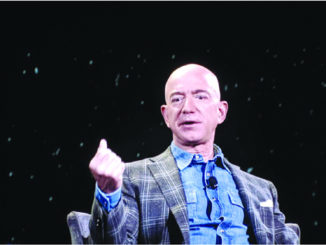
Five years ago, the book world was seized by collective panic over the un certain future of print. As readers migrated to new digital devices, e-book sales soared, up 1,260% between 2008 and 2010. Print sales dwindled, bookstores struggled to stay open and publishers and authors feared that cheaper e-books would cannibalize their business.
“E-books were this rocket ship going straight up,” said Len Vlahos, former executive director of the Book Industry Study Group, a research group that tracks the publishing industry .
While analysts once predicted e-books would overtake print by 2015, digital sales have instead slowed sharply , with signs that some e-book adopters are returning to print, or becoming hybrid readers, who juggle devices and paper. E-book sales fell by 10% in the first five months of this year, accor ding to Association of American Publishers. Digital books accounted last year for around 20% of the market, roughly the same as they did a few years ago.
Many e-book subscription services have shut down, while sales of e-reading devices have plunged as consumers migrated to tablets and smartphones. And according to some surveys, young readers still prefer reading on paper.
The surprising resilience of print has provided a lift to many booksellers. The American Booksellers Association counted 1,712 member stores in 2,227 locations in 2015, up from 1,410 in 1,660 locations five years ago.
“It’s resulted in a far healthier independent bookstore market today than we have had in a long time,” said Oren Teicher, chief executive of the American Booksellers Association Publishers, seeking to capitalize on the shift, are pouring money into their print infrastructures and distribution. Hachette added 218,000 square feet to its Indiana warehouse, while Penguin Random House has invested nearly $100 million in expanding and updating its warehouses and speeding up distribution of its books.
Digital books have been around for decades, ever since publishers began experimenting with CD-ROMs, but they did not catch on until 2008, after Amazon released the Kindle, which drew millions of book buyers to e-readers, which offered seamless, instant purchases.





Be the first to comment